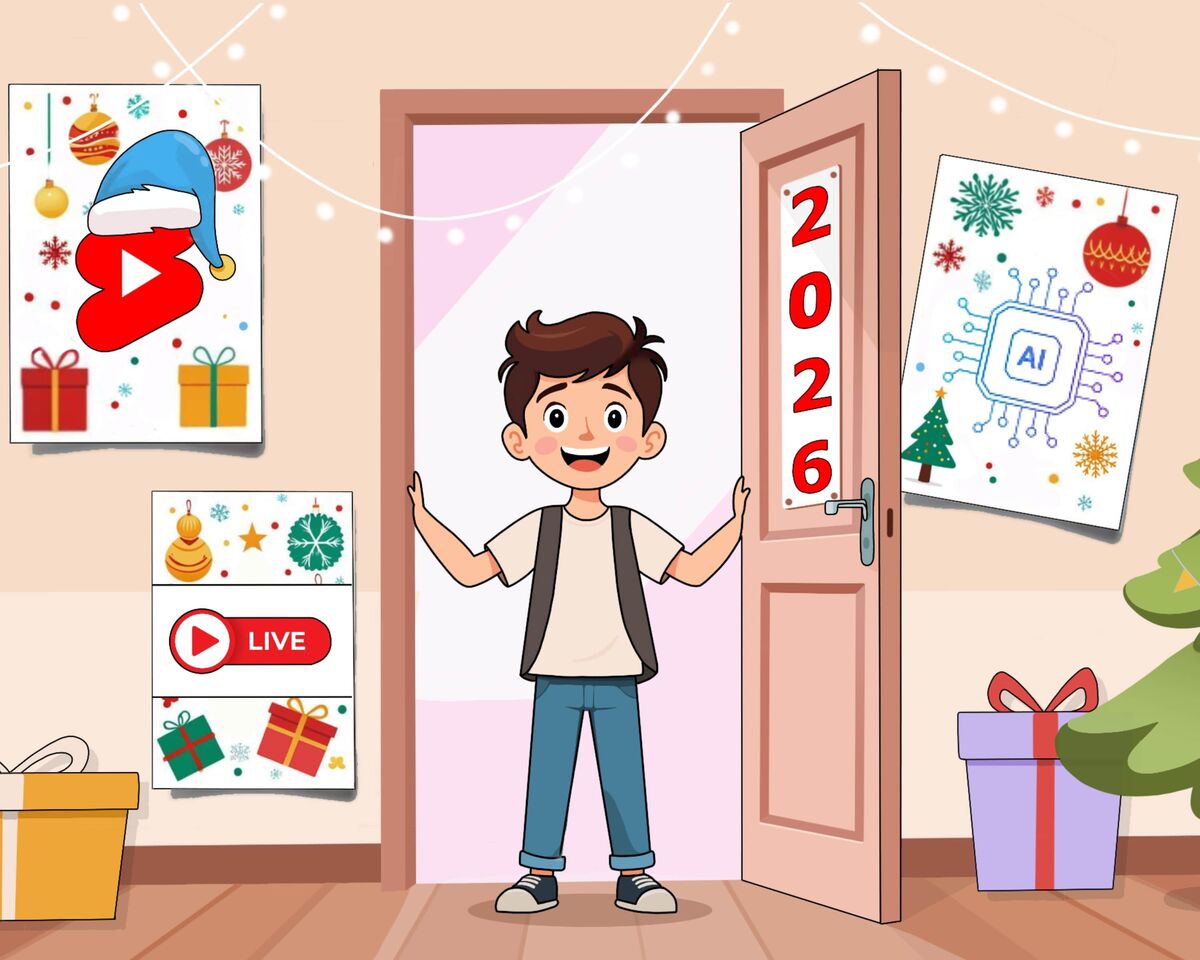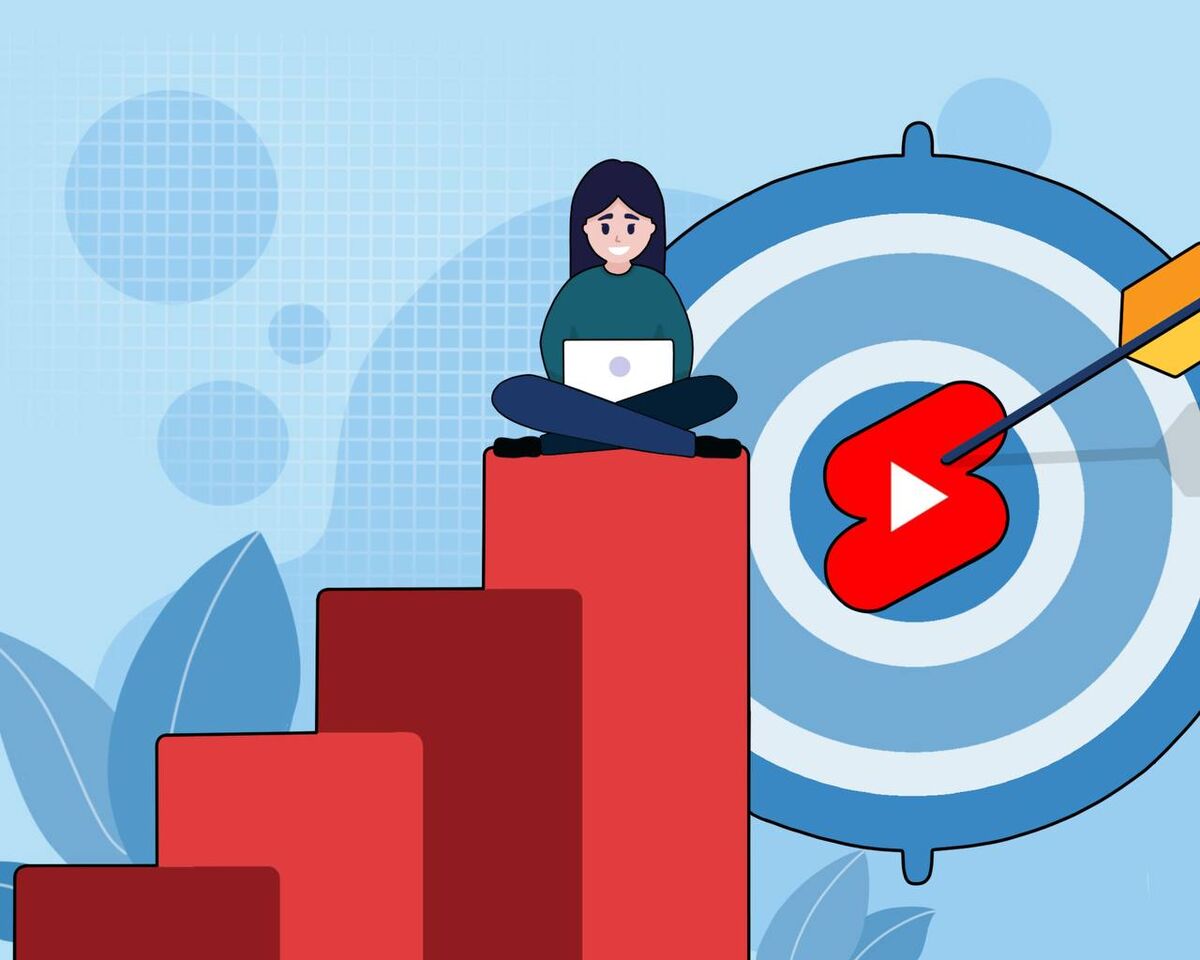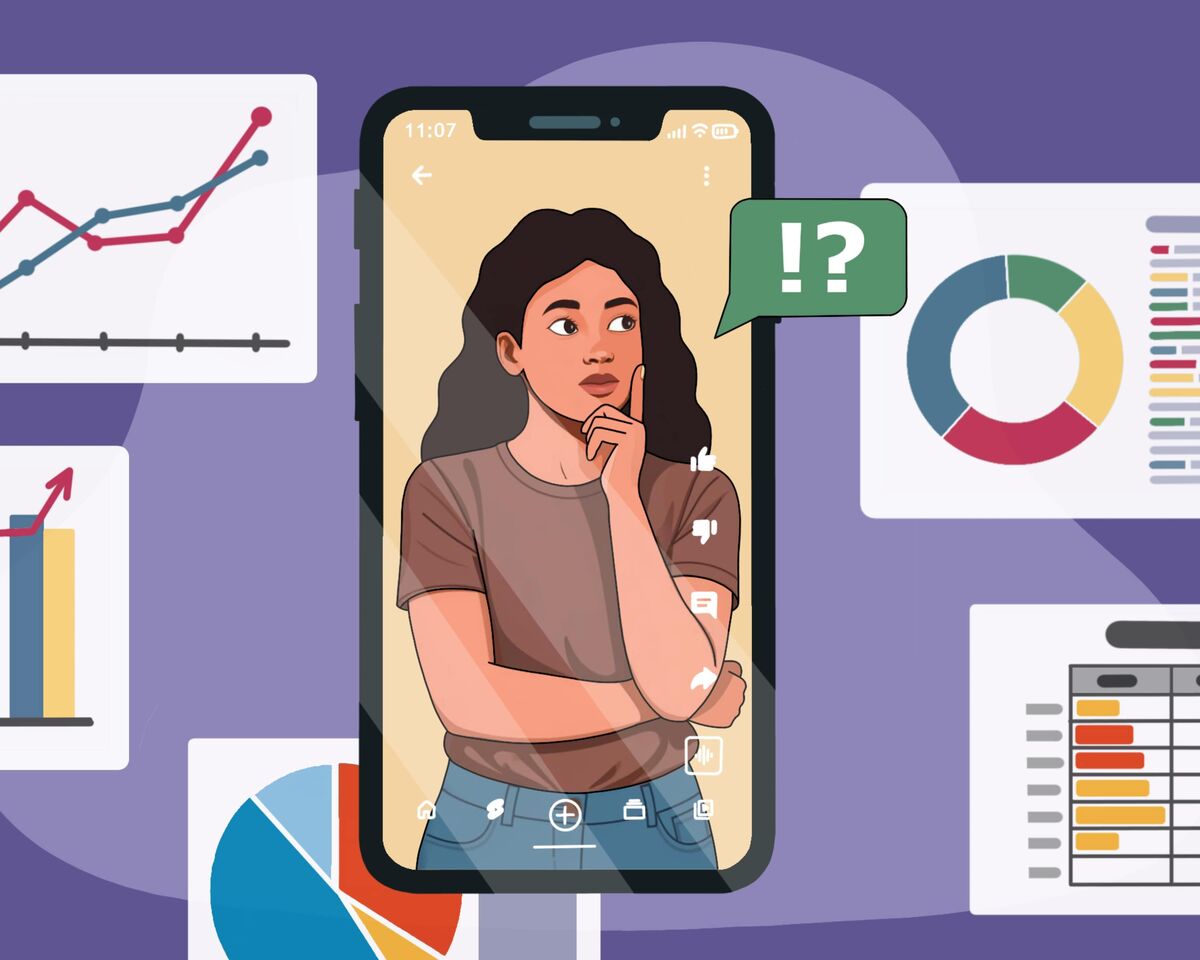10 BRUTAL Reasons Why Your YouTube Channel DIES
In fact, there are countless reasons why your views might have dropped. Analyzing each one in detail right now would be unrealistic, but we’ll try to list as many different ones as possible so you can get a sense of the situation and compare it to your own case.
And let’s immediately set aside the obvious reasons, such as these:
- Seasonality
A drop in views consistently happens every summer, during holidays, and on vacations—and that’s completely normal. Just accept that your audience isn’t spending as much time on YouTube during vacations, family gatherings, or time away.
The best advice here is to create simpler content, don’t overburden yourself, and maybe take a little break as well.
- Changes in how YouTube algorithms work
Every time the platform rolls out something new or is about to do so, both the algorithms and the statistics start lagging, and everything around begins to malfunction.
Honestly, all platform failures are easy to track and quickly resolve, after which YouTube itself apologizes for the inconvenience. So if the drop in views happened for this reason, you'll notice it right away.
- Events of a global nature
This is certainly something we have no control over: quarantine introductions, quarantine cancellations, socio-political upheavals, technological or natural disasters—people may leave the platform not by their own fault. In such cases, you just need to be prepared for anything and not expect magic, because life is unpredictable.
But again, if that's the reason, you'll definitely understand it and won't miss anything.
At the end of the article, we'll give you a bonus with a list of more curious reasons, but let's agree that you'll only consider them after you've taken all the main ones into account.
Reason #1: You are not using all the platform's features
How YouTube always tries to present them to you, and you don’t even notice!
So many praises were sung for Shorts, Podcasts, Premieres, and any new feature that the platform introduces. We fully understand those conservatives who don’t like half of what the platform presents, but you just have to accept one fact—YouTube doesn’t introduce new features for no reason.
When it launches something new, it inevitably impacts its revenue, so it makes sense for YouTube to promote creators who help popularize these new features.
At first, things might not work perfectly, as was the case with Shorts, but a huge number of creators, for example, managed to get millions of views and channel subscriptions with short videos.
Now, the algorithms for short and long videos are separated, so if you structure your logistics correctly—leading the viewer from a short video to a longer one—you can help your channel grow rather than drag it down. However, honestly, the Shorts boom is already behind us. Soon, previews without text will become popular in wider circles, and who knows, something new may come up again.
But here we’re talking about new features. There are also the older ones, which creators somehow forget about.
If your channel’s metrics are dropping, how about making full use of everything the platform offers, from video titles to channel tags? After all, a huge number of creators don’t write descriptions for videos or channels, don’t make thumbnails, don’t add subtitles or timestamps.
There’s so much to list here—have you checked if you’re using everything that’s available to you on your channel?
Reason #2: You don't study the platform rules
And here we’re not talking about obvious violations or discrepancies with the platform’s rules, but about the fact that sometimes we simply overlook small yet crucial details that can impact the growth of a channel.
For example, the basic 18+ rating on a video, which limits the audience that will see your content. The 18+ rating isn’t a violation, but if you think about it, it’s not surprising that it reduces views: if a video has age restrictions, not all platform users will be able to watch it, which essentially reduces the number of potential viewers.
So, it’s no surprise if views start to drop because your reach has decreased.
But there’s an even more important point that creators often miss. The decline in views can be caused not only by technical changes in how algorithms work but also by changes in the platform’s policies.
For example, there were significant drops in views when YouTube updated its rules and policies for children’s content.
After the $170 million fine for violating child privacy laws, which YouTube and Google were forced to pay, they had to tighten the rules. You’ve probably heard about it as the COPPA law.
According to YouTube’s rules, if you create videos for an audience younger than 13, you need to mark this. When you do this, people can’t comment on your video, notifications won’t be sent to your subscribers, and you’ll earn much less because you can’t use targeted ads for such videos.
What does this mean for you as a YouTuber? It means that due to policy changes, the same content won’t be promoted as effectively on the platform as it used to be, which leads to a drop in channel activity.
Reason #3: You're not listening to your audience
How many times have we encountered something like this: a creator runs a channel that's essentially made for them to share their thoughts and interests. At first, this captivates the audience, and people subscribe, waiting for new videos. But at some point, they realize that the creator continues doing everything solely for their own enjoyment. They don’t read comments, don’t consider what viewers ask or even what they just write—whether it’s positive or negative. Eventually, this unreciprocated love gets tiring, and viewers simply move on to somewhere they’re heard, where there’s a conversation.
As soon as you stop understanding what your viewers want, you fall into a hole. Look at your analytics, metrics, and comments—they’re your dialogue with the audience that will help you maintain a connection with them.
And finally, here’s another thought for this point: you often don’t study YouTube not just from a creator's perspective but also from a viewer's perspective. Try to look at YouTube as an ordinary user: what do you watch, where do you like things, where do you not, what makes you want to comment, what do you share with your friends, and so on.
Reason #4: You don't learn from other bloggers
And here, the phrase could actually be longer: you don’t learn from other creators, you just thoughtlessly compare yourself to them.
Comparing yourself to big creators is pointless—you’re on different levels and in different categories. These comparisons have no value and only demotivate you.
Studying your competitors helps you spot the mistakes you’re making or, for example, find gaps in your niche that you can fill.
Additionally, we want to point out here that real success lies in constantly learning.
Very often, the problem with a drop in channel activity is that the creator simply churns out the same content just to have something. Working on content becomes a routine, you get stuck and don’t want to do anything. And as soon as you stall in your self-development, both your channel and your content will stall as well. After all, they reflect you and your state.
To understand that you’ve gotten stuck, fallen into a hole, are tired, and need a shake-up or new knowledge—try rewatching your videos. If you find it hard to do, that’s a clear sign that something needs to change.
Reason #5: You don't have a plan
In 2025, it’s impossible to run a YouTube channel without a plan and strategy. Well, technically, it’s possible, but don’t expect growth—you haven’t even planned for it.
Without some strategy and plan, it’s unclear what you’re aiming for and what to analyze to understand how successfully you're moving toward it. And if your views have dropped but you never planned for them, maybe it’s time to start using at least some strategy? Then, it’ll be clearer what could have gone wrong.
To help you avoid choosing the wrong strategy and creating an ineffective plan, let's remember the main point—your goals on the channel should align with YouTube’s goals, because if you don’t match or help YouTube achieve its desired outcomes, don’t expect it to promote you.
The truth is: YouTube is a massive money-making machine, and every creator is just a small part of the bigger picture.
Reason #6: There is no sequence on the channel
And this is not just about uploading videos on the same day and time or maintaining a consistent channel image—though if you don’t even have that, then what’s there to talk about?
Consistency in a broader sense also means maintaining and nurturing the quality of your videos, presentation, and content.
A drop in views is often linked to a disruption in consistency in one way or another. For example, you may have changed your channel’s theme, altered your schedule, or deleted a video that was generating views—all of these factors could have impacted your metrics.
To understand how a new video format or schedule has affected your audience, simply check the comments. Usually, viewers react to any changes and share their opinions there.
Reason #7: Wrong priorities
If your priority is making money, then you’re either running a business or should consider finding a regular job, because at an amateur level, a YouTube channel in the first few months is definitely not about earnings.
It’s the audience that can lead you to success, and you won’t become a great creator if you leave your viewers out of the equation. Creators without an audience are just people. So if your metrics are dropping rapidly, take a step back and check yourself—maybe the issue is that you’re churning out videos just for the sake of it, rather than for your viewers or even for yourself.
Reason #8: You are using outdated or ineffective promotion methods
We just have to say this out loud: posting in irrelevant social media communities, spamming family and friends in every possible group and chat, or relying on Telegram channels that supposedly promise promotion—all of this will bring in a mixed audience that confuses the algorithm and ultimately harms your channel.
If you think your content is for "everyone," in reality, it’s for no one.
The issue is that an audience coming from random, unrelated sources might subscribe but won’t actually watch your videos. YouTube, seeing that your channel has subscribers who ignore new uploads, will eventually stop recommending your content altogether.
So if your views are dropping or your channel seems stuck, check whether you’ve accumulated a "dead" audience that simply isn’t interested in your content.
Also, a quick note for those claiming that SEO optimization is useless—it’s not. No tool on the platform is useless; it all depends on your expectations.
Having keywords and well-optimized SEO won’t guarantee a million views, but it’s one way to increase your chances of being discovered.
Reason #9: You don’t analyze successes and failures
First, take a good look at your analytics before you start panicking. We assure you that once you analyze your data, things will become clearer, and there’ll be no need to worry—you’ll know exactly what to do to help your channel.
The ability to properly interpret your statistics and objectively assess your successes and failures is the key to understanding why your views might have dropped.
Don’t compare your numbers to other channels when your content didn’t perform well. Your audience and your competitor’s audience may be similar, but they’re not identical. Just like you and another creator—you’re different. If your competitor made an amazing video with special effects, trying to replicate it might end up looking more awkward than impressive on your channel.
The same goes for live streams on new channels. There’s no point in streaming if you don’t have an audience to engage with. Gaming channels are especially guilty of this, mindlessly pumping out endless let’s play streams without considering what they’re making and for whom.
Once a live stream ends and becomes a regular video on your channel, YouTube will see one thing in your analytics—poorly viewed content with minimal watch time.
Reason #10: You are not sharing tasks
Every channel eventually reaches a point where views drop because it’s not growing from within—there’s no improvement in video quality, editing, or content depth. And that’s only half the problem.
The creator might want to fix everything, but there’s simply no time—because they’re a one-person team, handling everything from content planning and competitor analysis to scripting, filming, editing, optimization, and thumbnails.
Growth won’t happen until the creator frees themselves from at least one of these responsibilities.
Try to offload the tasks that take up the most time, and you’ll be surprised at what you can accomplish when you’re not weighed down by every single aspect of running the channel.
And now—
Bonus section
We deliberately placed these reasons at the end because they may be either unpopular or beyond a creator's control.
The first reason for declining views—one that few people talk about because no creator wants to even consider it—is that your content simply isn’t interesting.
Most creators, however, look for reasons everywhere except within themselves: shadow bans, algorithms, malicious bots sent by haters, or YouTube burying their channel.
It’s easy to latch onto comforting theories that blame platform updates or shadow bans. While these things aren’t impossible, the reality is often much simpler and more mundane.
Sometimes, it’s not that your content is bad or uninteresting, but that it’s not advertiser-friendly.
Never forget that YouTube exists to make money. If your content doesn’t help with that—because it’s too edgy, filled with pranks, extreme stunts, violence (gaming or otherwise)—YouTube is unlikely to promote it. Advertisers don’t want their ads placed on such content, and that means lost revenue for the platform.
Another factor that can reduce views is YouTube’s audience testing. If the platform pushes your video to new viewers and doesn’t get enough positive engagement signals, it may pause testing and stop recommending it. This is beyond your control, and you have to accept that YouTube’s promotion—like audience views—can be cyclical.
Lastly, let’s talk about YouTube’s cleanup process. Officially, this is known as a view quality audit. YouTube verifies whether your views are legitimate, and it doesn’t just target bots and artificial inflation—it also removes duplicate views from the same account and other potentially inauthentic traffic.
If your view count suddenly stalls, drops to zero, or behaves strangely, your channel may have undergone one of these audits. These cleanups can also result in subscriber losses, not just view reductions.
There’s no point in getting upset—this is YouTube’s way of keeping the platform fair, preventing fraud, and ensuring all creators are on a level playing field.
And don’t forget: if you delete a video, all the views and watch hours it generated will disappear as well.
As we mentioned at the beginning, there are countless reasons why a channel might stagnate, views might drop, or growth might slow. That’s why, if you ask an expert about it, they might either not respond or give a very general answer.
We needed an entire article just to briefly cover the key reasons—and even this list isn’t exhaustive.
The challenge is that on YouTube, not only are audience tastes highly individual, but the factors influencing channel growth and decline vary wildly from creator to creator.
Stay observant, keep improving, don’t be too hard on yourself, and remember our advice—one day, things will turn out just as you expect




